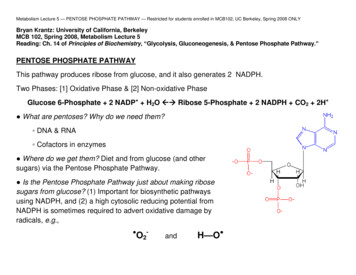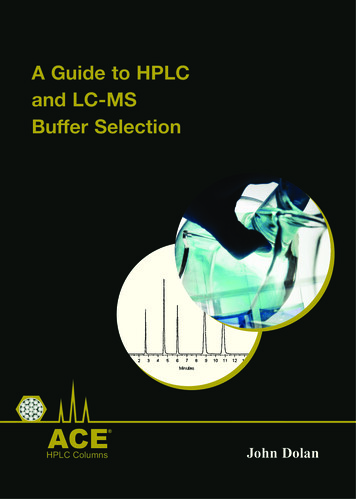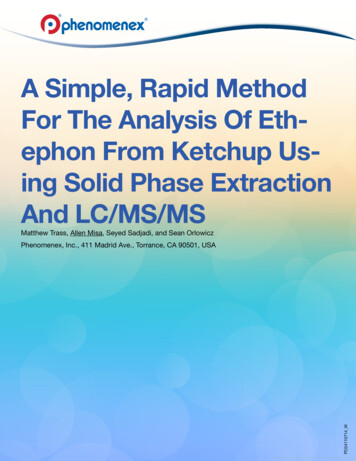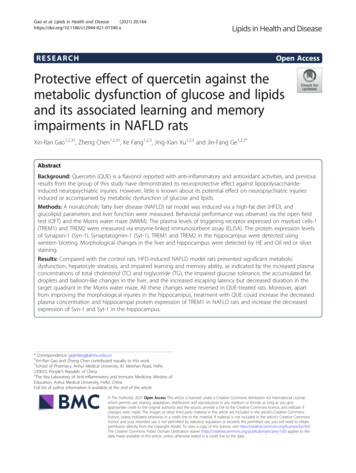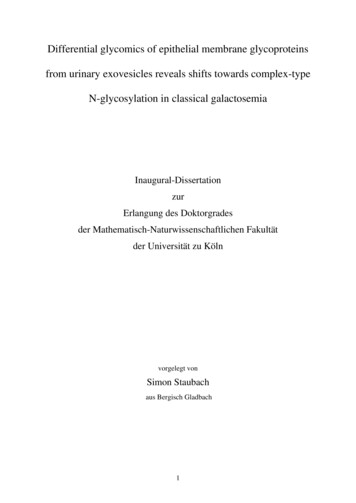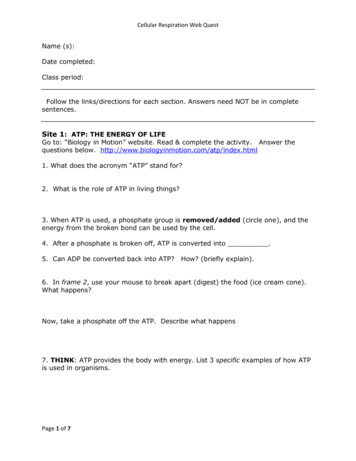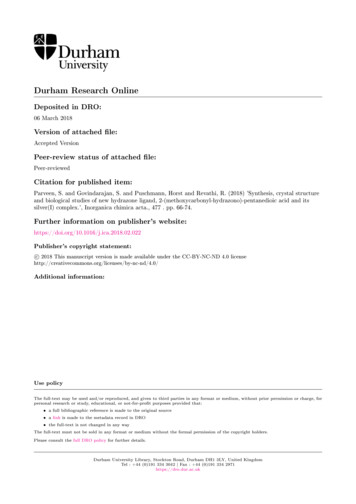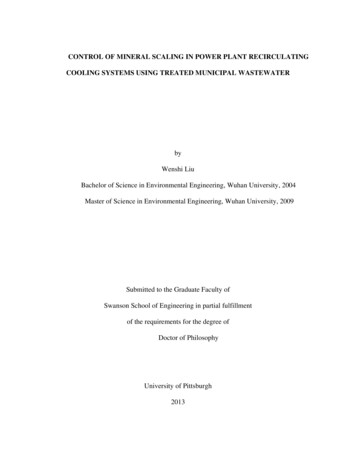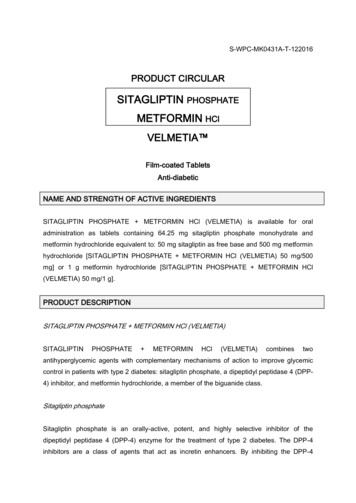
Transcription
S-WPC-MK0431A-T-122016PRODUCT CIRCULARSITAGLIPTINPHOSPHATEMETFORMIN HClVELMETIA Film-coated TabletsAnti-diabeticNAME AND STRENGTH OF ACTIVE INGREDIENTSSITAGLIPTIN PHOSPHATE METFORMIN HCl (VELMETIA) is available for oraladministration as tablets containing 64.25 mg sitagliptin phosphate monohydrate andmetformin hydrochloride equivalent to: 50 mg sitagliptin as free base and 500 mg metforminhydrochloride [SITAGLIPTIN PHOSPHATE METFORMIN HCl (VELMETIA) 50 mg/500mg] or 1 g metformin hydrochloride [SITAGLIPTIN PHOSPHATE METFORMIN HCl(VELMETIA) 50 mg/1 g].PRODUCT DESCRIPTIONSITAGLIPTIN PHOSPHATE METFORMIN HCl (VELMETIA)SITAGLIPTINPHOSPHATE METFORMINHCl(VELMETIA)combinestwoantihyperglycemic agents with complementary mechanisms of action to improve glycemiccontrol in patients with type 2 diabetes: sitagliptin phosphate, a dipeptidyl peptidase 4 (DPP4) inhibitor, and metformin hydrochloride, a member of the biguanide class.Sitagliptin phosphateSitagliptin phosphate is an orally-active, potent, and highly selective inhibitor of thedipeptidyl peptidase 4 (DPP-4) enzyme for the treatment of type 2 diabetes. The DPP-4inhibitors are a class of agents that act as incretin enhancers. By inhibiting the DPP-4
enzyme, sitagliptin increases the levels of two known active incretin hormones, glucagonlike peptide-1 (GLP-1) and glucose-dependent insulinotropic polypeptide (GIP). Theincretins are part of an endogenous system involved in the physiologic regulation of glucosehomeostasis. When blood glucose concentrations are normal or elevated, GLP-1 and GIPincrease insulin synthesis and release from pancreatic beta cells. GLP-1 also lowersglucagon secretion from pancreatic alpha cells, leading to reduced hepatic glucoseproduction. This mechanism is unlike the mechanism seen with sulfonylureas; sulfonylureascause insulin release even when glucose levels are low, which can lead to sulfonylureainduced hypoglycemia in patients with type 2 diabetes and in normal subjects. Sitagliptin is apotent and highly selective inhibitor of the enzyme DPP-4 and does not inhibit the closelyrelated enzymes DPP-8 or DPP-9 at therapeutic concentrations. Sitagliptin differs inchemical structure and pharmacological action from GLP-1 analogues, insulin, sulfonylureasor meglitinides, biguanides, peroxisome proliferator-activated receptor gamma (PPARγ )agonists, alpha-glucosidase inhibitors, and amylin analogues.Metformin hydrochlorideMetformin is an antihyperglycemic agent which improves glucose tolerance in patients withtype 2 diabetes, lowering both basal and postprandial plasma glucose. Its pharmacologicmechanisms of action are different from other classes of oral antihyperglycemic agents.Metformin decreases hepatic glucose production, decreases intestinal absorption ofglucose, and improves insulin sensitivity by increasing peripheral glucose uptake andutilization. Unlike sulfonylureas, metformin does not produce hypoglycemia in either patientswith type 2 diabetes or normal subjects (except in special circumstances, see WARNINGSAND PRECAUTIONS, Metformin hydrochloride) and does not cause hyperinsulinemia. Withmetformin therapy, insulin secretion remains unchanged while fasting insulin levels and daylong plasma insulin response may actually decrease.SITAGLIPTIN PHOSPHATE METFORMIN HCl (VELMETIA) contains sitagliptinphosphate and metformin hydrochloride.Sitagliptin azolo[4,3-a]pyrazinephosphate (1:1) monohydrate.
The empirical formula is C16H15F6N5O H3PO4 H2O and the molecular weight is 523.32.The structural formula is:FFHNH2 ONNNF.H3PO4.H2ONCF3Sitagliptin phosphate monohydrate is a white to off-white, crystalline, non-hygroscopicpowder. It is soluble in water and N,N-dimethyl formamide; slightly soluble in methanol; veryslightly soluble in ethanol, acetone, and acetonitrile; and insoluble in isopropanol andisopropyl acetate.Metformin hydrochlorideMetformin hydrochloride (N,N-dimethylimidodicarbonimidic diamide hydrochloride) is notchemically or pharmacologically related to any other classes of oral antihyperglycemicagents. The structural formula is as shown:Metformin hydrochloride is a white to off-white crystalline compound with a molecularformula of C4H11N5 HCl and a molecular weight of 165.63. Metformin hydrochloride isfreely soluble in water and is practically insoluble in acetone, ether and chloroform. The pKaof metformin is 12.4. The pH of a 1% aqueous solution of metformin hydrochloride is 6.68.PHARMACOKINETICSSITAGLIPTIN PHOSPHATE METFORMIN HCl (VELMETIA)The results of a definitive bioequivalence study in healthy subjects demonstrated that theSITAGLIPTIN PHOSPHATE METFORMIN HCl (VELMETIA) 50 mg/500 mg and 50 mg/1g combination tablets are bioequivalent to co-administration of corresponding doses of
SITAGLIPTIN PHOSPHATE (JANUVIA ) and metformin hydrochloride as individualtablets.Because bioequivalence is demonstrated at the lowest and highest combination tablet dosestrengths available, bioequivalence is conferred to the (sitagliptin/metformin) 50 mg/850 mgfixed dose combination (FDC) tablet.AbsorptionSitagliptin phosphateThe absolute bioavailability of sitagliptin is approximately 87%. Co-administration of a highfat meal with sitagliptin phosphate had no effect on the pharmacokinetics of sitagliptin.Metformin hydrochlorideThe absolute bioavailability of a metformin hydrochloride 500 mg tablet given under fastingconditions is approximately 50-60%. Studies using single oral doses of metforminhydrochloride tablets 500 mg to 1500 mg, and 850 mg to 2550 mg, indicate that there is alack of dose proportionality with increasing doses, which is due to decreased absorptionrather than an alternation in elimination. Food decreases the extent of and slightly delaysthe absorption of metformin, as shown by approximately a 40% lower mean peak plasmaconcentration (Cmax), a 25% lower area under the plasma concentration versus time curve(AUC), and a 35-minute prolongation of time to peak plasma concentration (Tmax) followingadministration of a single 850-mg tablet of metformin with food, compared to the same tabletstrength administered fasting. The clinical relevance of these decreases is unknown.DistributionSitagliptin phosphateThe mean volume of distribution at steady state following a single 100-mg intravenous doseof sitagliptin to healthy subjects is approximately 198 liters. The fraction of sitagliptinreversibly bound to plasma proteins is low (38%).Metformin hydrochloride
The apparent volume of distribution (V/F) of metformin following single oral doses ofmetformin hydrochloride tablets 850 mg averaged 654 358 L. Metformin is negligiblybound to plasma proteins, in contrast to sulfonylureas, which are more than 90% proteinbound. Metformin partitions into erythrocytes, most likely as a function of time. At usualclinical doses and dosing schedules of metformin hydrochloride tablets, steady state plasmaconcentrations of metformin are reached within 24-48 hours and are generally 1 mcg/mL.During controlled clinical trials of metformin, maximum metformin plasma levels did notexceed 5 mcg/mL, even at maximum doses.MetabolismSitagliptin phosphateSitagliptin is primarily eliminated unchanged in urine, and metabolism is a minor pathway.Approximately 79% of sitagliptin is excreted unchanged in the urine.Following a [14C]sitagliptin oral dose, approximately 16% of the radioactivity was excreted asmetabolites of sitagliptin. Six metabolites were detected at trace levels and are not expectedto contribute to the plasma DPP-4 inhibitory activity of sitagliptin. In vitro studies indicatedthat the primary enzyme responsible for the limited metabolism of sitagliptin was CYP3A4,with contribution from CYP2C8.Metformin hydrochlorideIntravenous single-dose studies in normal subjects demonstrate that metformin is excretedunchanged in the urine and does not undergo hepatic metabolism (no metabolites havebeen identified in humans) nor biliary excretion.EliminationSitagliptin phosphateFollowing administration of an oral [14C]sitagliptin dose to healthy subjects, approximately100% of the administered radioactivity was eliminated in feces (13%) or urine (87%) within
one week of dosing. The apparent terminal t1/2 following a 100-mg oral dose of sitagliptin wasapproximately 12.4 hours and renal clearance was approximately 350 mL/min.Elimination of sitagliptin occurs primarily via renal excretion and involves active tubularsecretion. Sitagliptin is a substrate for human organic anion transporter-3 (hOAT-3), whichmay be involved in the renal elimination of sitagliptin. The clinical relevance of hOAT-3 insitagliptin transport has not been established. Sitagliptin is also a substrate of p-glycoprotein,which may also be involved in mediating the renal elimination of sitagliptin. However,cyclosporine, a p-glycoprotein inhibitor, did not reduce the renal clearance of sitagliptin.Metformin hydrochlorideRenal clearance is approximately 3.5 times greater than creatinine clearance, whichindicates that tubular secretion is the major route of metformin elimination. Following oraladministration, approximately 90% of the absorbed drug is eliminated via the renal routewithin the first 24 hours, with a plasma elimination half-life of approximately 6.2 hours. Inblood, the elimination half-life is approximately 17.6 hours, suggesting that the erythrocytemass may be a compartment of distribution.Characteristics in PatientsType 2 DiabetesSitagliptin phosphateThe pharmacokinetics of sitagliptin in patients with type 2 diabetes are generally similar tothose in healthy subjects.Metformin hydrochlorideIn the presence of normal renal function, there are no differences between single- ormultiple-dose pharmacokinetics of metformin between patients with type 2 diabetes andnormal subjects, nor is there any accumulation of metformin in either group at usual clinicaldoses.Renal Insufficiency
SITAGLIPTIN PHOSPHATE METFORMIN HCl (VELMETIA)SITAGLIPTIN PHOSPHATE METFORMIN HCl (VELMETIA) should not be used inpatients with renal insufficiency (see CONTRAINDICATIONS).Sitagliptin phosphateAn approximately 2-fold increase in the plasma AUC of sitagliptin was observed in patientswith moderate renal insufficiency, and an approximately 4-fold increase was observed inpatients with severe renal insufficiency and in patients with ESRD on hemodialysis, ascompared to normal healthy control subjects.Metformin hydrochlorideIn patients with decreased renal function (based on measured creatinine clearance), theplasma and blood half-life of metformin is prolonged and the renal clearance is decreased inproportion to the decrease in creatinine clearance.Hepatic InsufficiencySitagliptin phosphateIn patients with moderate hepatic insufficiency (Child-Pugh score 7 to 9), mean AUC andCmax of sitagliptin increased approximately 21% and 13%, respectively, compared to healthymatched controls following administration of a single 100-mg dose of sitagliptin phosphate.These differences are not considered to be clinically meaningful.There is no clinical experience in patients with severe hepatic insufficiency (Child-Pughscore 9). However, because sitagliptin is primarily renally eliminated, severe hepaticinsufficiency is not expected to affect the pharmacokinetics of sitagliptin.Metformin hydrochlorideNo pharmacokinetic studies of metformin have been conducted in patients with hepaticinsufficiency.
GenderSitagliptin phosphateGender had no clinically meaningful effect on the pharmacokinetics of sitagliptin based on acomposite analysis of Phase I pharmacokinetic data and on a population pharmacokineticanalysis of Phase I and Phase II data.Metformin hydrochlorideMetformin pharmacokinetic parameters did not differ significantly between normal subjectsand patients with type 2 diabetes when analyzed according to gender. Similarly, incontrolled clinical studies in patients with type 2 diabetes, the antihyperglycemic effect ofmetformin was comparable in males and females.ElderlySitagliptin phosphateAge did not have a clinically meaningful impact on the pharmacokinetics of sitagliptin basedon a population pharmacokinetic analysis of Phase I and Phase II data. Elderly subjects (65to 80 years) had approximately 19% higher plasma concentrations of sitagliptin compared toyounger subjects.Metformin hydrochlorideLimited data from controlled pharmacokinetic studies of metformin in healthy elderlysubjects suggest that total plasma clearance of metformin is decreased, the half life isprolonged, and Cmax is increased, compared to healthy young subjects. From these data, itappears that the change in metformin pharmacokinetics with aging is primarily accounted forby a change in renal function (see GLUCOPHAGE1 prescribing information: CLINICALPHARMACOLOGY, Special Populations, Geriatrics).SITAGLIPTIN PHOSPHATE METFORMIN HCl (VELMETIA) treatment should not beinitiated in patients 80 years of age unless measurement of creatinine clearance1GLUCOPHAGE is a registered trademark of Merck Sante S.A.S, an associate of Merck KGaA of Darmstadt, Germany.Licensed to Bristol-Meyers Squibb Company.
demonstrates that renal function is not reduced (see WARNINGS AND PRECAUTIONS,Metformin hydrochloride).PediatricNo studies with SITAGLIPTIN PHOSPHATE METFORMIN HCl (VELMETIA) have beenperformed in pediatric patients.RaceSitagliptin phosphateRace had no clinically meaningful effect on the pharmacokinetics of sitagliptin based on acomposite analysis of Phase I pharmacokinetic data and on a population pharmacokineticanalysis of Phase I and Phase II data, including subjects of white, Hispanic, black, Asian,and other racial groups.Metformin hydrochlorideNo studies of metformin pharmacokinetic parameters according to race have beenperformed. In controlled clinical studies of metformin in patients with type 2 diabetes, theantihyperglycemic effect was comparable in whites (n 249), blacks (n 51), and Hispanics(n 24).Body Mass Index (BMI)Sitagliptin phosphateBody mass index (BMI) had no clinically meaningful effect on the pharmacokinetics ofsitagliptin based on a composite analysis of Phase I pharmacokinetic data and on apopulation pharmacokinetic analysis of Phase I and Phase II data.PHARMACODYNAMICSSitagliptin phosphate
GeneralIn patients with type 2 diabetes, administration of single oral doses of sitagliptin leads toinhibition of DPP-4 enzyme activity for a 24-hour period, resulting in a 2- to 3-fold increase incirculating levels of active GLP-1 and GIP, increased plasma levels of insulin and C-peptide,decreased glucagon concentrations, reduced fasting glucose, and reduced glucoseexcursion following an oral glucose load or a meal.In Phase III clinical studies of 18- and 24-week duration, treatment with sitagliptin 100 mgdaily in patients with type 2 diabetes significantly improved beta cell function, as assessedby several markers, including HOMA-β (Homeostasis Model Assessment-β ), proinsulin toinsulin ratio, and measures of beta cell responsiveness from the frequently-sampled mealtolerance test. In Phase II studies, sitagliptin 50 mg twice daily provided similar glycemicefficacy compared to sitagliptin 100 mg once daily.In a randomized, placebo-controlled, double-blind, double-dummy, four-period crossovertwo-day study in healthy adult subjects, the effects on post-meal plasma concentrations ofactive and total GLP-1 and glucose after co-administration of sitagliptin and metformin werecompared with those after administration of sitagliptin alone, metformin alone or placebo,each administered for two days. The incremental 4-hour post-meal weighted mean activeGLP-1 concentrations were increased approximately 2-fold after either administration ofsitagliptin alone or metformin alone compared with placebo. The effect on active GLP-1concentrations after co-administration of sitagliptin and metformin were additive, with activeGLP-1 concentrations increased by approximately 4-fold compared with placebo. Sitagliptinalone increased only active GLP-1 concentrations, reflecting inhibition of DPP-4, whereasmetformin alone increased active and total GLP-1 concentrations to a similar extent. Thesedata are consistent with different mechanisms for the increase in active GLP-1concentrations. Results from the study also demonstrated that sitagliptin, but not metformin,enhances active GIP concentrations.In studies with healthy subjects, sitagliptin did not lower blood glucose or causehypoglycemia, suggesting that the insulinotropic and glucagon suppressive actions of thedrug are glucose dependent.Effects on blood pressure
In a randomized, placebo-controlled crossover study in hypertensive patients on one convertingenzymeinhibitors,angiotensin-II antagonists, calcium-channel blockers, beta-blockers and diuretics), coadministration with sitagliptin was generally well tolerated. In these patients, sitagliptin had amodest blood pressure lowering effect; 100 mg per day of sitagliptin reduced 24-hour meanambulatory systolic blood pressure by approximately 2 mm Hg, as compared to placebo.Reductions have not been observed in subjects with normal blood pressure.Cardiac ElectrophysiologyIn a randomized, placebo-controlled crossover study, 79 healthy subjects were administereda single oral dose of sitagliptin 100 mg, sitagliptin 800 mg (8 times the recommended dose),and placebo. At the recommended dose of 100 mg, there was no effect on the QTc intervalobtained at the peak plasma concentration, or at any other time during the study. Followingthe 800-mg dose, the maximum increase in the placebo-corrected mean change in QTcfrom baseline at 3 hours postdose was 8.0 msec. This small increase was not considered tobe clinically significant. At the 800-mg dose, peak sitagliptin plasma concentrations wereapproximately 11 times higher than the peak concentrations following a 100-mg dose.In patients with type 2 diabetes administered sitagliptin 100 mg (N 81) or sitagliptin 200 mg(N 63) daily, there were no meaningful changes in QTc interval based on ECG dataobtained at the time of expected peak plasma concentration.INDICATIONSSITAGLIPTIN PHOSPHATE METFORMIN HCl (VELMETIA) is indicated as initial therapyin patients with type 2 diabetes mellitus to improve glycemic control when diet and exercisedo not provide adequate glycemic control.SITAGLIPTIN PHOSPHATE METFORMIN HCl (VELMETIA) is indicated as an adjunct todiet and exercise to improve glycemic control in patients with type 2 diabetes mellitusinadequately controlled on metformin or sitagliptin alone or in patients already being treatedwith the combination of sitagliptin and metformin.SITAGLIPTIN PHOSPHATE METFORMIN HCl (VELMETIA) is indicated as part of triplecombination therapy with a sulfonylurea as an adjunct to diet and exercise in patients with
type 2 diabetes mellitus inadequately controlled with any two of the three agents: metformin,sitagliptin, or a sulfonylurea.SITAGLIPTIN PHOSPHATE METFORMIN HCl (VELMETIA) is indicated as part of triplecombination therapy with a PPARγ agonist (i.e., thiazolidinediones) as an adjunct to dietand exercise in patients with type 2 diabetes mellitus inadequately controlled with any two ofthe three agents: metformin, sitagliptin, or a PPARγ agonist.SITAGLIPTIN PHOSPHATE METFORMIN HCl (VELMETIA) is indicated in patients withtype 2 diabetes mellitus as an adjunct to diet and exercise to improve glycemic control incombination with insulin.RECOMMENDED DOSEGeneralThe dosage of antihyperglycemic therapy with SITAGLIPTIN PHOSPHATE METFORMINHCl (VELMETIA) should be individualized on the basis of the patient’ s current regimen,effectiveness, and tolerability while not exceeding the maximum recommended daily dose of100 mg sitagliptin.SITAGLIPTIN PHOSPHATE METFORMIN HCl (VELMETIA) should generally be giventwice daily with meals, with gradual dose escalation, to reduce the gastrointestinal (GI) sideeffects associated with metformin.Dosing RecommendationsThe starting dose of SITAGLIPTIN PHOSPHATE METFORMIN HCl (VELMETIA) shouldbe based on the patient’ s current regimen.SITAGLIPTIN PHOSPHATE METFORMIN HCl (VELMETIA) should be given twice dailywith meals. The following doses are available:50 mg sitagliptin/500 mg metformin hydrochloride50 mg sitagliptin/1 g metformin hydrochlorideAs initial therapy:
For patients with type 2 diabetes mellitus, whose hyperglycemia is inadequately controlledwith diet and exercise alone, the recommended starting dose of SITAGLIPTINPHOSPHATE METFORMIN HCl (VELMETIA) is 50 mg sitagliptin/500 mg metforminhydrochloride twice daily. Patients may be titrated up to 50 mg sitagliptin/1 g metforminhydrochloride twice daily.For patients inadequately controlled on metformin monotherapy:For patients not adequately controlled on metformin alone, the usual starting dose ofSITAGLIPTIN PHOSPHATE METFORMIN HCl (VELMETIA) should provide sitagliptindosed as 50 mg twice daily (100 mg total daily dose) plus the dose of metformin alreadybeing taken.For patients inadequately controlled on sitagliptin monotherapy:For patients inadequately controlled on sitagliptin alone, the usual starting dose ofSITAGLIPTIN PHOSPHATE METFORMIN HCl (VELMETIA) is 50 mg sitagliptin/500 mgmetformin hydrochloride twice daily. Patients may be titrated up to 50 mg sitagliptin/1 gmetformin hydrochloride twice daily. Patients taking sitagliptin monotherapy dose-adjustedfor renal insufficiency should not be switched to SITAGLIPTIN PHOSPHATE METFORMIN HCl (VELMETIA) (see CONTRAINDICATIONS).For patients inadequately controlled on dual combination therapy with any two of thefollowing three antihyperglycemic agents: sitagliptin, metformin or a PPARγ agonist (i.e.thiazolidinediones):The usual starting dose of SITAGLIPTIN PHOSPHATE METFORMIN HCl (VELMETIA)should provide sitagliptin dosed as 50 mg twice daily (100 mg total daily dose). Indetermining the starting dose of the metformin component, the patient’ s level of glycemiccontrol and current dose (if any) of metformin should be considered. Gradual doseescalation to reduce the gastrointestinal (GI) side effects associated with metformin shouldbe considered.For patients switching from sitagliptin co-administered with metformin:For patients switching from co-administration of sitagliptin and metformin, SITAGLIPTINPHOSPHATE METFORMIN HCl (VELMETIA) may be initiated at the dose of sitagliptinand metformin already being taken.
For patients inadequately controlled on dual combination therapy with any two of thefollowing three antihyperglycemic agents: sitagliptin, metformin or a sulfonylurea:The usual starting dose of SITAGLIPTIN PHOSPHATE METFORMIN HCl (VELMETIA)should provide sitagliptin dosed as 50 mg twice daily (100 mg total daily dose). Indetermining the starting dose of the metformin component, the patient’ s level of glycemiccontrol and current dose (if any) of metformin should be considered. Gradual doseescalation to reduce the gastrointestinal (GI) side effects associated with metformin shouldbe considered. Patients currently on or initiating a sulfonylurea may require lowersulfonylurea doses to reduce the risk of sulfonylurea-induced hypoglycemia (seeWARNINGS AND PRECAUTIONS).For patients inadequately controlled on dual combination therapy with any two of thefollowing three antihyperglycemic agents: sitagliptin, metformin or insulin:The usual starting dose of SITAGLIPTIN PHOSPHATE METFORMIN HCl (VELMETIA)should provide sitagliptin dosed as 50 mg twice daily (100 mg total daily dose). Indetermining the starting dose of the metformin component, the patient’ s level of glycemiccontrol and current dose (if any) of metformin should be considered. Gradual doseescalation to reduce the gastrointestinal (GI) side effects associated with metformin shouldbe considered. Patients currently on or initiating insulin therapy may require lower doses ofinsulin to reduce the risk of hypoglycemia (see WARNINGS AND PRECAUTIONS).No studies have been performed specifically examining the safety and efficacy ofSITAGLIPTIN PHOSPHATE METFORMIN HCl (VELMETIA) in patients previously treatedwith other oral antihyperglycemic agents and switched to SITAGLIPTIN PHOSPHATE METFORMIN HCl (VELMETIA). Any change in therapy of type 2 diabetes should beundertaken with care and appropriate monitoring as changes in glycemic control can occur.MODE OF ADMINISTRATIONSITAGLIPTIN PHOSPHATE METFORMIN HCl (VELMETIA) is available for oraladministration as tablets. It should generally be given twice daily with meals.CONTRAINDICATIONSSITAGLIPTIN PHOSPHATE METFORMIN HCl (VELMETIA) is contraindicated in patientswith:
1. Renal disease or renal dysfunction, e.g., as suggested by serum creatinine levels 1.5 mg/dL [males], 1.4 mg/dL [females], or abnormal creatinine clearance, whichmay also result from conditions such as cardiovascular collapse (shock), acutemyocardial infarction, and septicemia.2. Known hypersensitivity to sitagliptin phosphate, metformin hydrochloride or any othercomponent of SITAGLIPTIN PHOSPHATE METFORMIN HCl (VELMETIA) persensitivityReactions and UNDESIRABLE EFFECTS, Postmarketing Experience).3. Acute or chronic metabolic acidosis, including diabetic ketoacidosis, with or withoutcoma.SITAGLIPTIN PHOSPHATE METFORMIN HCl (VELMETIA) should be temporarilydiscontinued in patients undergoing radiologic studies involving intravascular administrationof iodinated contrast materials, because the use of such products may result in UTIONS;Metforminhydrochloride).WARNINGS AND PRECAUTIONSSITAGLIPTIN PHOSPHATE METFORMIN HCl (VELMETIA)SITAGLIPTIN PHOSPHATE METFORMIN HCl (VELMETIA) should not be used inpatients with type 1 diabetes or for the treatment of diabetic ketoacidosis.Pancreatitis: There have been reports of acute pancreatitis, including fatal and non-fatalhemorrhagic or necrotizing pancreatitis (see UNDESIRABLE EFFECTS), in patients takingsitagliptin. Patients should be informed of the characteristic symptom of acute pancreatitis:persistent, severe abdominal pain. Resolution of pancreatitis has been observed afterdiscontinuation of sitagliptin. If pancreatitis is suspected, SITAGLIPTIN PHOSPHATE METFORMIN HCl (VELMETIA) and other potentially suspect medicinal products should bediscontinued.Monitoring of renal function: Metformin and sitagliptin are known to be substantially excretedby the kidney. The risk of metformin accumulation and lactic acidosis increases with thedegree of impairment of renal function. Thus, patients with serum creatinine levels above
the upper limit of normal for their age should not receive SITAGLIPTIN PHOSPHATE METFORMIN HCl (VELMETIA). In patients with advanced age, SITAGLIPTIN PHOSPHATE METFORMIN HCl (VELMETIA) should be carefully titrated to establish the minimum dosefor adequate glycemic effect, because aging can be associated with reduced renal function.In elderly patients, particularly those 80 years of age, renal function should be monitoredregularly.Before initiation of therapy with SITAGLIPTIN PHOSPHATE METFORMIN HCl(VELMETIA) and at least annually thereafter, renal function should be assessed and verifiedas normal. In patients in whom development of renal dysfunction is anticipated, renalfunction should be assessed more frequently and SITAGLIPTIN PHOSPHATE METFORMIN HCl (VELMETIA) discontinued if evidence of renal impairment is present.Hypoglycemia in Combination with a Sulfonylurea or with Insulin: As is typical with otherantihyperglycemic agents, hypoglycemia has been observed when sitagliptin and metforminwere used in combination with insulin or a sulfonylurea (see UNDESIRABLE EFFECTS).Therefore, to reduce the risk of sulfonylurea- or insulin-induced hypoglycemia, a lower doseof sulfonylurea or insulin may be considered (see RECOMMENDED DOSE).Sitagliptin phosphateHypoglycemia in Combination with a Sulfonylurea or with Insulin: In clinical trials ofsitagliptin as monotherapy and as part of combination therapy with agents not known tocause hypoglycemia (i.e., metformin or a PPARγagonist thiazolidinedione), rates ofhypoglycemia reported with sitagliptin were similar to rates in patients taking placebo. Astypical with other antihyperglycemic agents, hypoglycemia has been observed whensitagliptin was used in combination with insulin or a sulfonylurea (see UNDESIRABLEEFFECTS). Therefore, to reduce the risk of sulfonylurea- or insulin-induced hypoglycemia, alower dose of sulfonylurea or insulin may be considered (see RECOMMENDED arketingreportsofserioushypersensitivity reactions in patients treated with sitagliptin, one of the components ofSITAGLIPTIN PHOSPHATE METFORMIN HCl (VELMETIA). These reactions includeanaphylaxis, angioedema, and exfoliative skin conditions including Stevens-Johnsonsyndrome. Because these reactions are reported voluntarily from a population of uncertainsize, it is generally not possible to reliably estimate their frequency or establish a causal
relationship to drug exposure. Onset of these reactions occurred within the first 3 monthsafter initiation of treatment with sitagliptin, with some reports occurring after the first dose. Ifa hypersensitivity reaction is suspected, discontinue SITAGLIPTIN PHOSPHATE METFORMIN HCl (VELMETIA), assess for other potential causes for the event, NTRAINDICATIONSandUNDESIRABLE EFFECTS, Postmarketing Experience.)Bullous Pemphigoid: Postmarketing cases of bullous pemphigoid requiring hospitalizationhave been reported with DPP-4 inhibitor use. In reported cases, patients typically recoveredwith topical or systemic immunosuppressive treatment and disco
The empirical formula is C 16 H 15 F 6 N 5O H 3 PO 4 H 2 O and the molecular weight is 523.32. The structural formula is: F F F N N N N CF 3 H NH O 2. H 3 PO 4 H 2 O Sitagliptin phosphate monohydrate is a white to off -white, crystalline, non-hygroscopic powder. It is soluble in water and N,N-dimethyl formamide; slightl y soluble in .
